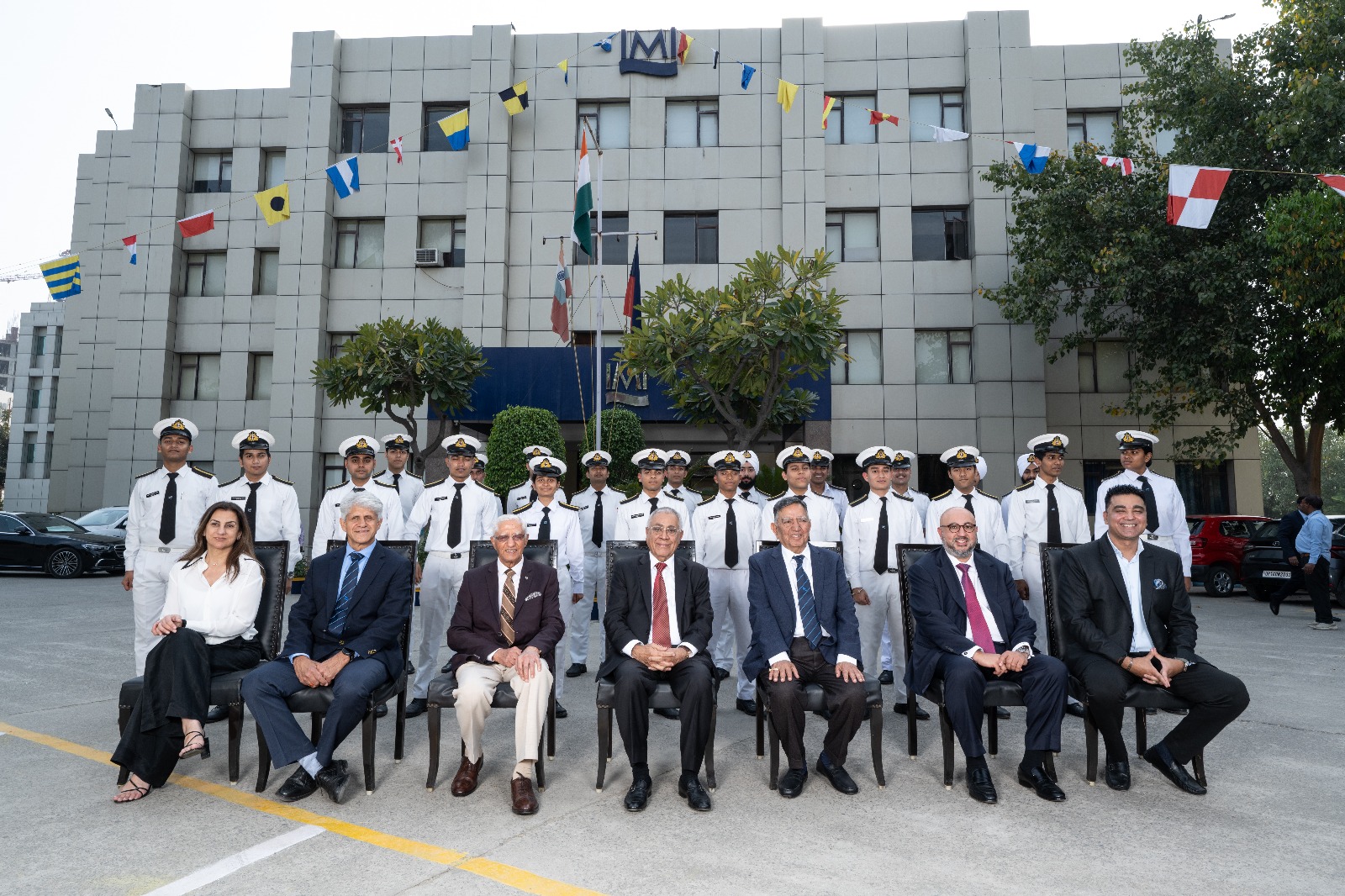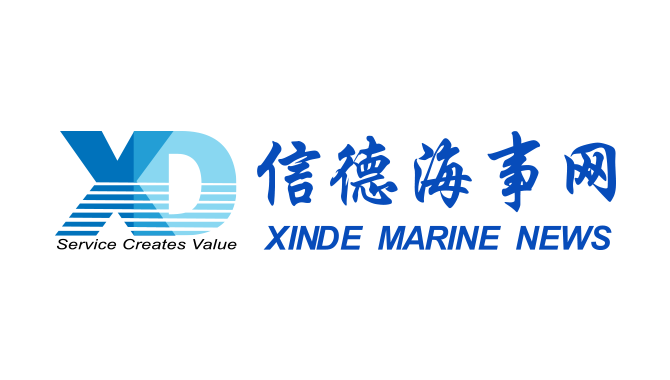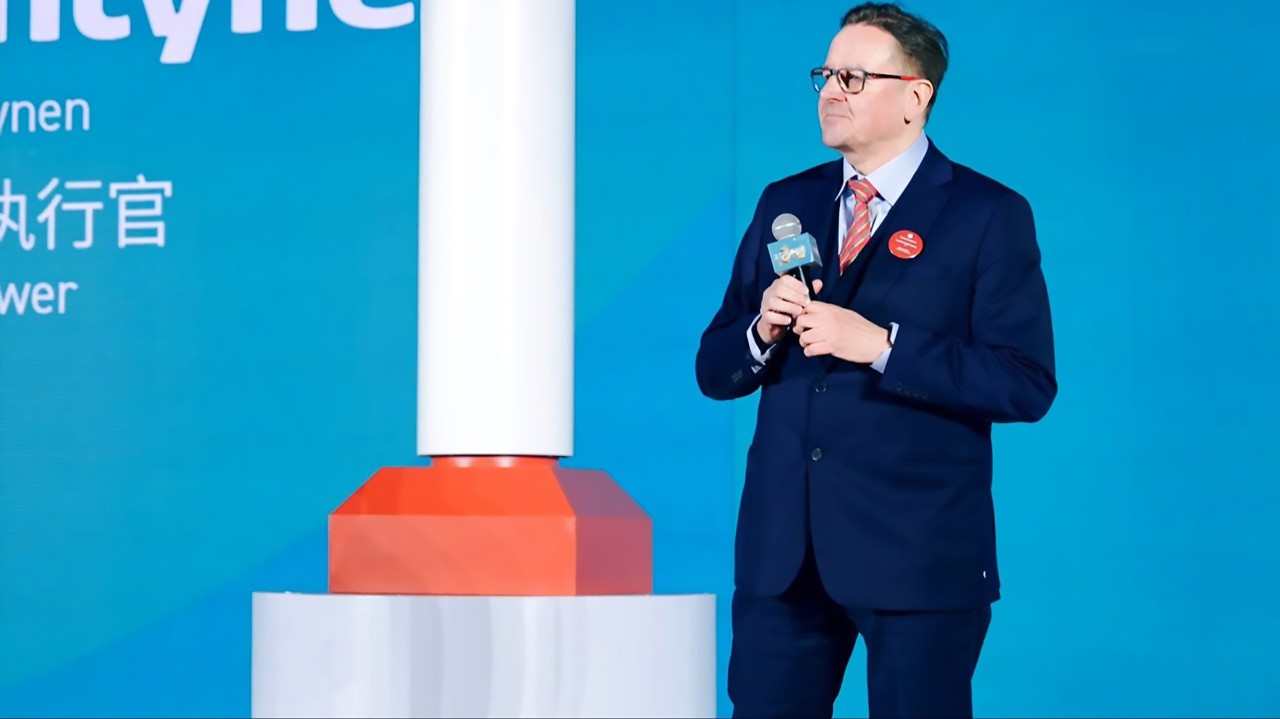Could you please introduce what is yourself and ANEMOI business?
Anemoi Marine Technologies is globally recognized as one of the foremost developers and providers of Rotor Sails, a revolutionary wind propulsion technology for the shipping industry. With the increasing demand for innovative and sustainable solutions to reduce carbon emissions, ship owners, managers, and charterers have turned to Rotor Sails to harness wind power and provide auxiliary propulsion to commercial vessels. This technology has proven to be a popular choice as it can significantly reduce fuel consumption and harmful emissions, with fuel savings of up to 30% being achievable. Anemoi's contribution to the shipping industry's decarbonization and sustainability efforts is critical, as they offer one of the most effective and sustainable solutions available to modernize the shipping industry.
Anemoi's patented Rotor Sail technology can be installed on most vessel types and sizes, from existing vessels to newbuilds, in order to enhance the Energy Efficiency Design Index of the vessel. We currently have 16 Rotor Sails in production, and by the end of 2023 we plan the have the capacity to install up to 50 Rotor Sails a year.
The Rotor Sails, which resemble cylinders, provide forward propulsion to the ship by using the wind to create drag forces. Can you provide an intuitive explanation? Could you tell me of how this works?
The technology itself is very simple. When the wind speed and direction is right, the Rotor Sails are switched on automatically and rotated by an electric motor. As the wind flow meets the spinning Rotor Sails, an aerodynamic phenomenon called the Magnus Effect comes into action. The wind in front of the Rotor Sail is accelerated as it is dragged in the direction of the spin. This fast-moving wind has a lower pressure. Meanwhile, the wind behind the Rotor Sail slows, causing an increase in pressure. This difference in pressure pushes the Rotor Sail forwards and propels the ship.
Anemoi's automatic system detects the wind speed and direction and will switch on or off automatically. This reduces the requirement for any crew input and ensures savings are maximized.
What types and sizes of vessels are suitable for Anemoi Rotor Sails?
Rotor Sails can be installed on most vessel types, including bulk carriers, tankers, ferries, ro-ros and multipurpose vessels. Our bulk carrier background equipped us with the knowledge of how to best adapt the technology for complex vessel operations. As a result, we developed a range of Rotor Sail with variable heights and, most uniquely, a range of deployment systems and mounting arrangements that enable the Rotor Sails to be moved.
In order to accommodate the Rotor Sails on a vessel, Anemoi’s technology comes in three deployment systems. The first is fixed mounting, second is folding, which enables the Rotor Sail to be lowered from vertical to enable the vessel to pass under low bridges and avoid impact to cargo loading and unloading. Finally, Anemoi Rotor Sails can be installed with a patented rail system, which enables the sails to move along the deck of the ship so cranes can load and unload without obstruction.
How much fuel consumption and greenhouse gas emissions can Anemoi Rotor Sails reduce? What is the average utilization rate of each voyage?
Anemoi has developed a Fuel Saving Assessment Model (FSAM) to accurately predict fuel and emissions savings from various sizes and classes of vessel. Central to FSAM are four key data sets: Rotor Sail performance data (harvested from Anemoi’s full scale UK test facility), vessel performance data, route data and wind data. FSAM utilizes this data to simulate thousands of historic voyages over a five-year period to ensure the results accurately reflect the wind conditions experienced on the chosen route. Any additional drag and increased generator usage are also included so that the net results are fair and transparent.
As an example, for a 310,000-dwt VLCC trading the Bonny-Ningbo route and fitted with five Rotor Sails, FSAM predicts an annual fuel and emission saving of 13.5%, which equates to 1,622 tonnes of fuel and 5,044 tons of carbon saved each year.
However, each vessel and each voyage is unique. We are continuously gathering data to better understand the impact each of our Rotor Sails is having on fuel consumption and emissions reduction, as well as finding ways to make them more effective.
What are the advantages and disadvantages of different technical routes such as Rotor sails, hard sails, and kite sails?
Rotor Sails provide a more efficient and sustainable solution for commercial vessels. Typically Rotor Sails produce more thrust per square meter than other wind propulsion technologies. In addition, Anemoi's Rotor Sails are significantly less obtrusive because of the deployment systems we offer, ensuring the operation of the vessel is not compromised by the presence of onboard Rotor Sails.
Besides Rotor Sails, what other technologies can be used together on a ship with Anemoi Rotor Sails? How much GHG can be reduced altogether?
Most technologies can be used in combination with Anemoi Rotor Sails, including those offered by Wärtsilä, with which we have a 10-year license agreement, such as air lubrication, propellor and rudder optimization. Rotor Sails are a fuel agnostic future-proofed solution, meaning they will lower fuel consumption and operational costs of any fuel type, including any alternative fuels which may come on to the market.
Can existing ships be retrofitted with Anemoi Rotor sails? How long does the installation process take?
Incorporating Anemoi Rotor Sails is incredibly straightforward as it does not require any wholesale changes to the vessel’s structure or drydocking, making them ideal for retrofitting. All of the equipment is delivered to the dock where a specialist team supervise the full installation process. Each Rotor Sail is installed in a single crane lift and connected to the foundation on the ship’s deck once integration work complete.
The success of each installation is due to the critical feasibility study that we conduct before any installation. We support our clients at every stage of the installation process, including the design and installation of structural foundations and electrical cabling. Vessel integration can be completed during the construction phase of a newbuild vessel, or during a survey at a shipyard for a retrofit vessel.
What kind of repair and maintenance is needed for Anemoi Rotor sails after installation? Will it increase the burden on seafarers?
Anemoi Rotor Sails are built to last for up to 25 years and have low maintenance costs. Regular maintenance would usually include periodic visual inspection of components and primary structural items, bearing lubrication replenishment and greasing of mechanical components.
Minimal crew input is required to use Anemoi Rotor Sails due to the system’s automated control unit. However, to ensure the maximum benefit is extracted and the equipment is well understood, we provide full training for crew and on-shore technical departments.
All Anemoi Rotor Sails are automated and respond to the wind conditions to maximize performance with no crew interaction required. All safety features, shutdowns and alarms are automatic. Crew interaction is only required when using our folding and rail mounted systems.
Some seafarers think that Rotor sails can affect the ship's look-out and perspective, making it less conducive to safe navigation. Can you explain and allay their concerns?
Safety is Anemoi’s first priority and this is where the feasibility study is so important as it’s during the study that we carry out assessment of the vessel operations to determine the best size and deployment for the Rotor Sails. For every aspect of the installation, from the initial design to final construction, we ensure that any risks, including bridge perspectives, are fully taken into account and work closely with our customers to support their crew’s needs.
All Anemoi designs are certified and approved by major classification societies to ensure compliance with the latest standards and rules in all conditions, including SOLAS regulations.
What is the total cost to install Anemoi Rotor sails? How long is the payback period for shipowners in your case?
The cost to install is dependent on the size of Rotor Sail selected, the quantity and the deployment system required, so it’s best for shipowners to get in touch for a bespoke quote but payback is generally within four to eight years.
Rotor sails, as a symbol of wind propulsion technology, are making robust progress. As newbuilds and retrofitted ships are all equipped with the modern components, the future of the shipping industry is bound to be greener and more environmentally friendly. The upcoming MEPC 80 conference will once again deliberate the readiness of Rotor Sail technology. As an increasingly mature technology, Rotor Sails are ready to play the critical role in future shipping.
The opinions expressed herein are the author's and not necessarily those of The Xinde Marine News.
Please Contact Us at:
media@xindemarine.com


 Dr. Harry S. Banga and Mr. Angad Banga of The Carav
Dr. Harry S. Banga and Mr. Angad Banga of The Carav  Liberian Registry Welcomes Kyle Hurst as Senior Vic
Liberian Registry Welcomes Kyle Hurst as Senior Vic  KATALIST: Accelerating Green Shipping through Innov
KATALIST: Accelerating Green Shipping through Innov  Revealing the risks: digital solutions for complian
Revealing the risks: digital solutions for complian  Beibu Gulf Port Chairman Zhou Shaobo Passes Away at
Beibu Gulf Port Chairman Zhou Shaobo Passes Away at  Exclusive Interview with Norsepower CEO: Bringing S
Exclusive Interview with Norsepower CEO: Bringing S